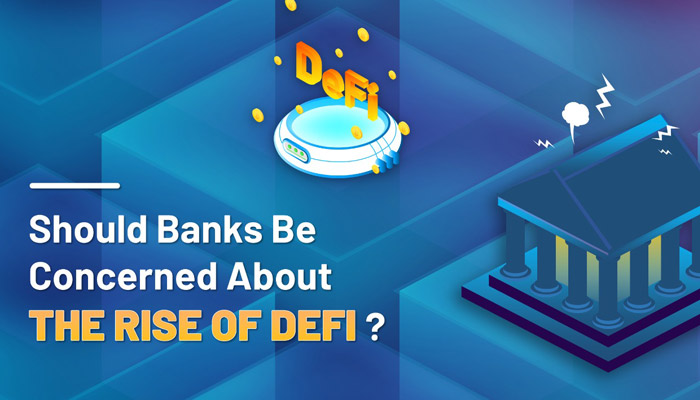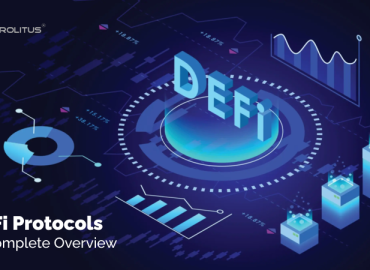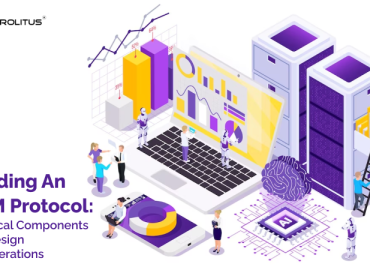Decentralized finance, or DeFi as it is more commonly known as, has become a much talked about topic. The existing paradigm in the global financial sector is being shifted by DeFi. The availability of internet connectivity has now reached nearly every corner of the globe. Decentralized Finance is accessible to everyone who has an access to internet connection.
Defining Decentralized Finance and discussing its advantages
DeFi is a technology that allows financial goods and services to be made available to the general public over a decentralised blockchain network.
The marketplace is always open with DeFi, and since no institutional authority or intermediaries are available to assist transactions, no one can limit payments or deny anybody access to anything. DeFi is a system in which buyers, sellers, creditors, and debtors interact with one another or with a solely software-based middleman, rather than a business or organisation, utilising blockchain-based software.
DeFi aspires to democratise finance by replacing traditional centralised institutions with peer-to-peer partnerships. It is a realistic financial system that offers people interested in the financial market far more than what the existing financial intermediaries could possibly offer. On DeFi Platforms, for example, one might lend and borrow money, forecast price changes in a portfolio of investments, trade crypto currencies, earn interest, and insure against risks. DeFi gives you access to global markets and more feasible alternatives to your current banking and currency options. Also, smart contracts that anyone can inspect and analyze have enabled things that were once slow and susceptible to human error to be automated and reliable.
Defining smart contracts and its role in DeFi
As previously stated, DeFi is a financial system based on Distributed Ledger Technology (DLT), i.e. blockchains, which among other things, is real-time, decentralised, permanent, and programmable i.e. is a smart contracts.
A smart contract may be defined as a self-executing agreement in which the terms of the buyer-seller agreement are written directly into the code lines. The code, along with the agreements it contains, is distributed throughout a decentralised blockchain network. Transactions are trackable and immutable, and programming controls how they are carried out.
DeFi hold many advantages that makes it so attractive for both investors and borrowers. Some of these benefits are loans at low interest, high returns on investment, a transparent financial system, open access to financial services for all, asset ownership and investment autonomy, and sustainable development, there are a few drawbacks that have some people worried about the future of the decentralised finance.
Regulations in DeFi- is it needed?
One of the most prevalent stumbling blocks to the expansion of DeFi, according to financial experts, is a lack of regulatory certainty. Global banking authorities have yet to intervene significantly in the DeFi space, but this is beginning to change. In mid-August, Poly Network, which provides cross-chain bridge services, was hacked for $610 million. Despite the fact that the hackers have begun returning the stolen funds, the attack has caused numerous financial authorities to take a closer look at what’s going on outside of their normal jurisdiction. Conventional financial players are also taking a good look at how a DLT-based financial system may work: central banks and commercial lenders are both researching digital currencies. Their objective appears to be to find a secure way to leverage DLT-enabled innovation, integrating technology back within the regulatory fold.
Increasing importance of Internet of Value (IoV)
In an effort to seize the debate to its next stage, financial experts have started to examine the concept of the “internet of value,” in which value is exchanged as easily, cheaply, and consistently as data is current, as well as the incorporation of tokenization as a new method of holding assets.
The Internet of Value (IoV) is a data network that enables the transfer of value (frequently and rising) without the use of a third party. It is characterised by hyper-connectivity in a significant fashion. By definition, dematerialisation and platformisation need an ever-increasing number of financial participants exchanging data and value across networks. We expect the IoV to grow as linked networks of trust since trust between participants is so crucial in all marketplaces. Other trust-providing technologies, such as distributed ledger systems, will certainly emerge as the IoV gains traction over the coming several years.
The potential associated with Regulated Internet of Value
People have begun to discuss a regulated internet of value because of the vast potential associated with the internet of value and DeFi, as well as the disadvantage of the lack of a legal framework. Tony McLaughlin of Citi initiated the debate in June 2021 with his paper, “The Regulated Internet of Value.” He wanted to show that tokens are a preferable representational technology for digital value since they are accessible 24 hours a day, seven days a week, are immutable, programmable, have one source of truth, are multi-asset, and resolve instantly. According to him, the formal sector has the power to create not one, but two major pivots: expanding the Central Bank Digital Currency’s work to include all regulated liabilities, including stablecoins; and creating a larger picture for the tokenization of regulated liabilities and assets on the same blockchain.
In July, SETL, a specialist firm that creates DLT solutions for financial markets, responded with a paper titled “Realizing the Internet of Value,” which looks at the practical implications of a comprehensive approach to tokenizing regulated liabilities. Importantly, the authors provide a blueprint with specific steps and considerations for transforming the financial services sector from where it is currently to an internet of value. They claim that because DLT and tokens are a fast-evolving area, doing nothing might prove to be the least efficient and riskiest course of action in the end.
Way Forward
Both DeFi and internet of value demand a framework at the global level that is transparent and supervised. Public blockchain advances, according to Tony McLaughlin, point to programmable, global, multi-asset infrastructures that are always on. If the regulated industry uses tokenization in a fragmented fashion, unregulated networks may gain relative relevance. The regulated sector has the ability and maybe has a duty, to come together behind a common vision of a regulated internet of value.





